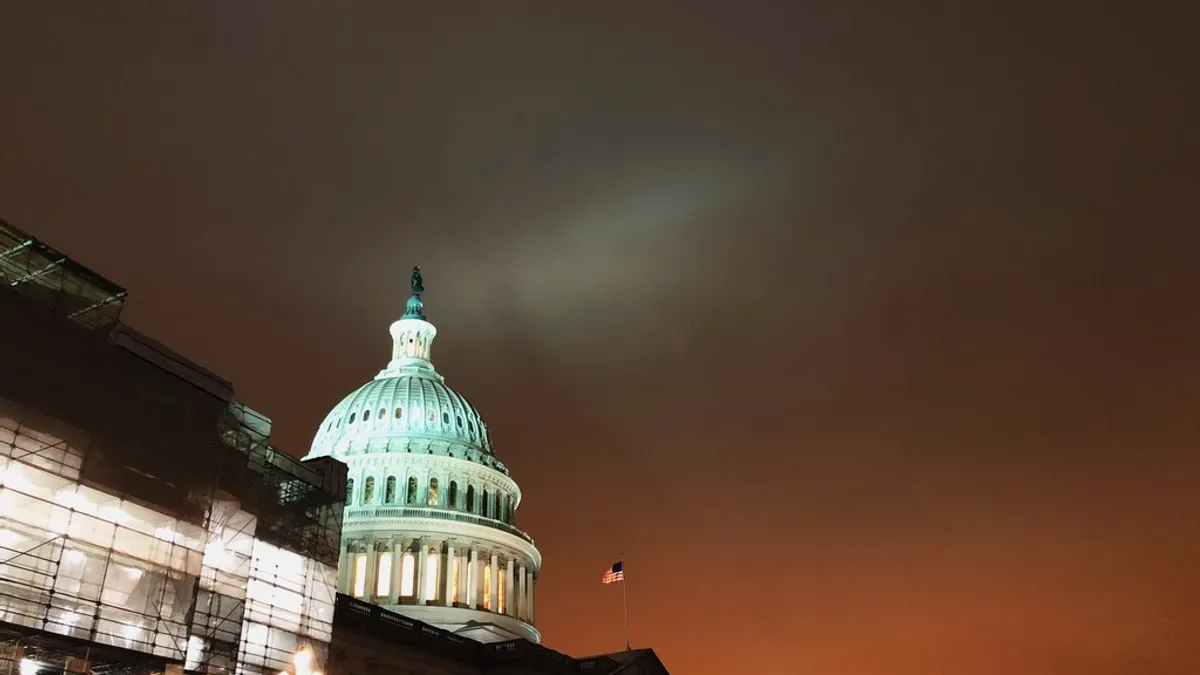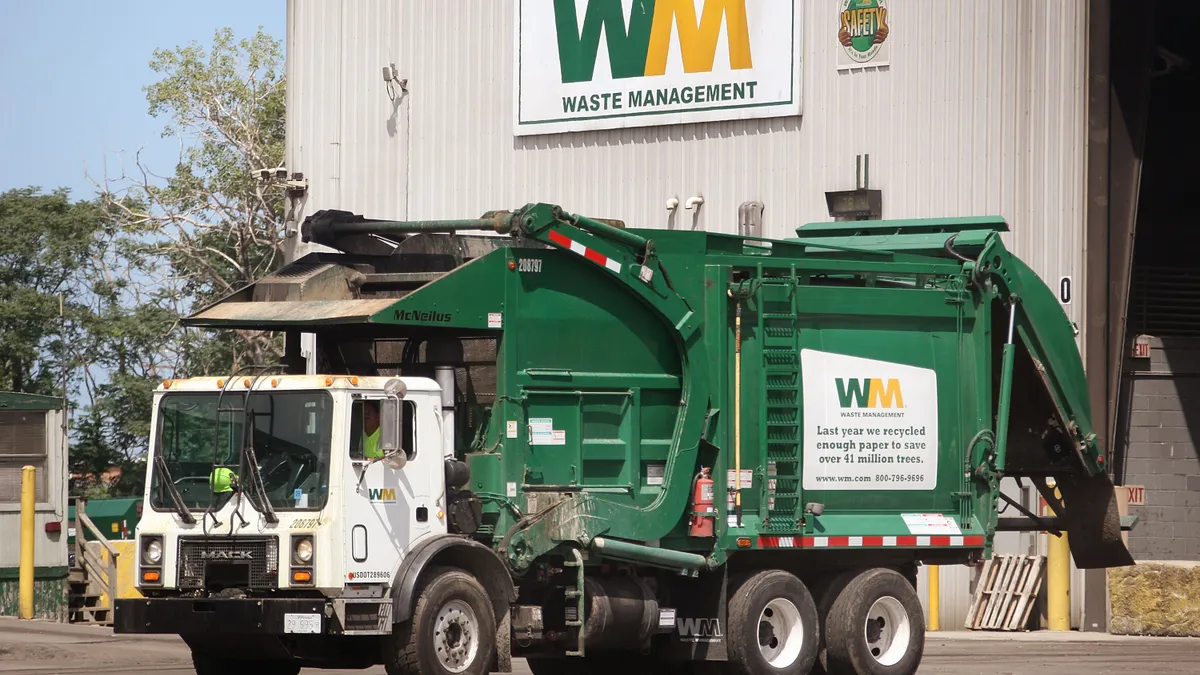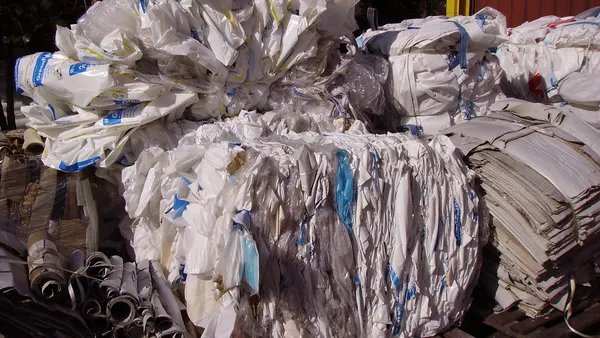The coronavirus relief package passed by Congress and presented to President Donald Trump this week in part reinvigorates the federal Paycheck Protection Program (PPP) with a fresh $284 billion in funds.
If the bill is signed by Trump, that development could equal a new influx of capital for the waste and recycling industry, which received nearly $812 million in loans from the first round of the program that closed in August, according to more detailed data posted by the U.S. Small Business Administration in late November.
Those funds reportedly helped retain some 66,542 jobs across categories including solid waste collection and disposal companies, as well as MRF operators. They were particularly crucial in the second quarter when a significant portion of collection companies' commercial customers closed and key revenue streams were shut off.
The top allocations across more than 4,000 industry recipients
| Company | State | Loan Amount | Jobs Retained |
|---|---|---|---|
| Rubicon | GA | $9,779,000 | 290 |
| Patriot Environmental Services | CA | $7,055,900 | 367 |
| California Waste Solutions | CA | $6,808,100 | 295 |
| Homewood Disposal Service | IL | $5,786,140 | 276 |
| Meridian Waste Acquisitions | NC | $5,646,400 | 384 |
| JRM Hauling & Recycling Services | MA | $5,344,555 | 250 |
| Royal Waste Services | NY | $5,228,475 | 401 |
| Garaventa Enterprises | CA | $5,103,023 | 417 |
| Freehold Cartage | NJ | $4,743,087 | 280 |
| Community Waste Disposal | TX | $4,466,455 | N/A |
Three-quarters of those jobs were covered by the subcategory of loans greater than $150,000. Waste and recycling service provider Rubicon appeared to receive the largest loan of anyone in the industry at nearly $9.78 million. The company over the summer said the funds were important in retaining employees and "ensuring that our network of over 7,000 small business hauling partners could continue to receive payment for their waste and recycling services."
In other categories, Community Waste Disposal in Dallas received the largest allocation among solid waste landfill businesses with a nearly $4.47 million loan, Electronic Recyclers International in Fresno, California, led MRFs with a close to $4.44 million loan, and Ross Service Corporations in Wilmington, Delaware, topped out the "solid waste combustors and incinerators" category with an approximately $4.17 million loan.
| Applicant NAICS code | Total funds allocated | Percentage of overall waste industry allocations |
|---|---|---|
| Solid Waste Collection (562111) | $523,743,011 | 64.53% |
| Materials Recovery Facilities (562920) | $194,321,557 | 23.94% |
| Solid Waste Landfill (562212) | $83,285,877 | 10.26% |
| Solid Waste Combustors and Incinerators (562213) | $10,264,851 | 1.26% |
Waste Dive has formatted a revised list of all industry recipients for loans under $150,000 and over $150,000 for public access.
Despite these millions in funds, waste and recycling operations across the country continue to be strained by the pandemic's effects on the economy and consumption habits, in some cases facing lower revenues and shifting volumes. Many local governments stretching funds across an array of public services in need are also struggling to adequately support the sector, though this package did not include specific funding for them.
Waste and recycling businesses may again have the opportunity to seek PPP loans from the federal government thanks to a notable portion of the $900 billion deal cleared through Congress – pending Trump's veto threat. The $284 billion in funds available mark a little more than half of what was distributed from the program's earlier allocation.
The National Waste and Recycling Association (NWRA), in conjunction with scores of other industries' trade groups, publicly pushed for a second round of the program with some amendments, including that PPP funds be tax deductible. Under the latest iteration of the program, businesses are able to claim deductions for expenses covered by PPP loan proceeds.
As for who can apply, companies that did not borrow money in the first round can follow original eligibility criteria. Businesses that have already received a loan through the program can apply again for an amount equal to 2.5 times average monthly payroll, with a ceiling of $2 million versus the previous $10 million cap.
The waste industry's largest companies will once again not be eligible for PPP funding, but smaller service providers could potentially still see it as beneficial. In its prior support for the program, the NWRA also acknowledged the fact that loans in some cases could help customers in a variety of sectors.
According to a recent report from Stifel, commercial and industrial waste volumes remain down by an average of 5% (or as much as 10% in certain regions). Managing Director Michael E. Hoffman said PPP funding was more helpful in the second quarter when many customers were closed, but that is no longer the case. As a result, he anticipates eligible industry service providers may not apply for PPP funding at scale again.
"Small companies... have rightsized to the reduced level of commercial activity. What is back is not open or on a severely reduced level of service," said Hoffman via email. "I suspect most will not need and may not want to jump [through] the hoops needed to get it."
Cole Rosengren and Matt Leonard contributed to this story.


















